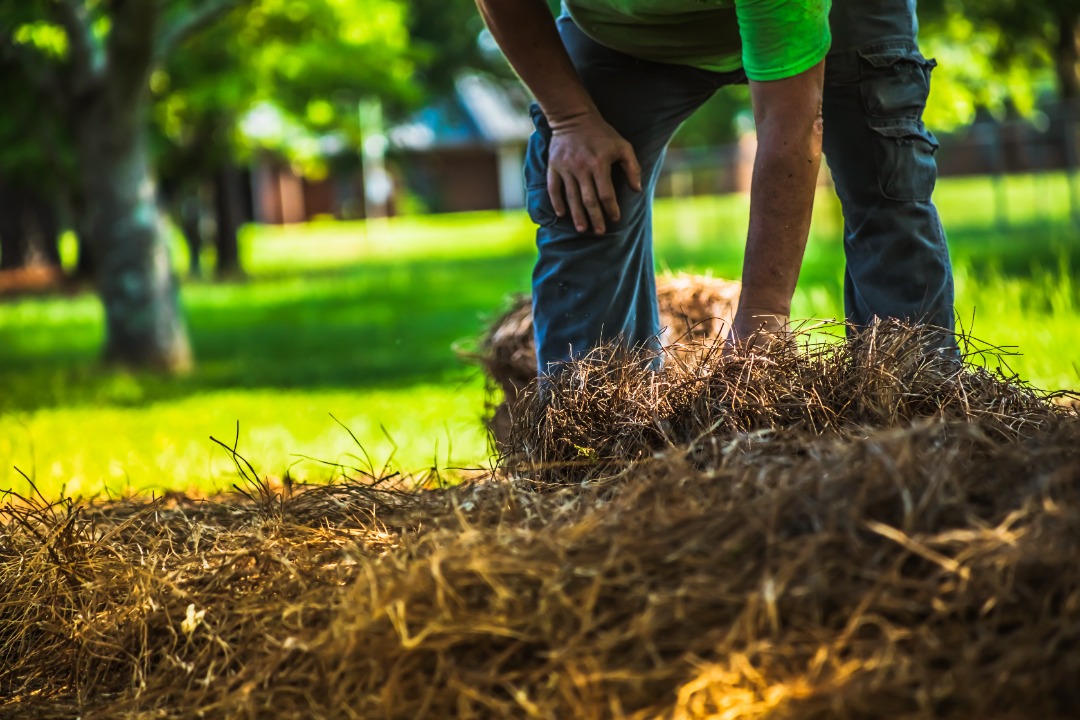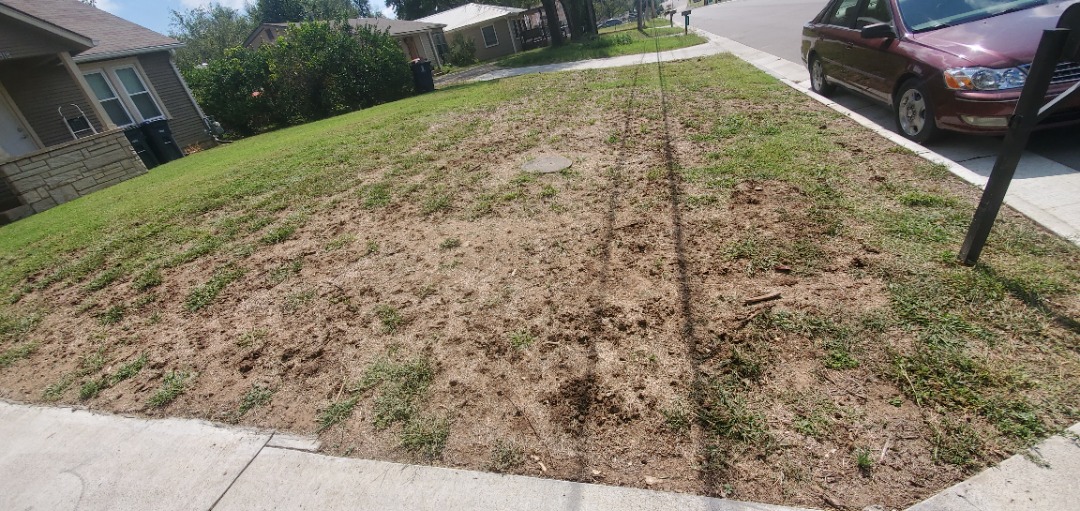How To Switch Up Your Lawn Care Routine For November Weather
Introduction: As temperatures dip and the light changes, lawns behave differently. What worked in July rarely does for November, and that is to be expected. A smart lawn care plan now protects roots, smooths out spring recovery, and saves you time when weekends get busy. Learn how to adjust your lawn care routine to help it thrive during the cooler months.
Lawn Care For November Weather: Reset The Basics
Aeration And Soil Health As Temperatures Drop
Cooler air slows topsoil growth, yet it will often stay workable for a while. That window is ideal for aeration if it has not been done recently. Core aeration opens compacted soil, so oxygen and water reach roots more easily, storing energy for winter. If the soil is too soggy, wait for a drier spell so cores pull cleanly and the machine does not smear the surface. The goal is a tidy pattern of plugs, not ruts. Afterward, let the plugs break down on their own, since those little crumbs return microbes and minerals right where the grass needs them.
If your lawn feels spongy underfoot during fall, that is a hint that organic debris has piled up between the soil and the grass blades. Gentle dethatching in late fall can help, though timing matters. Light thatch removal works while the turf still has some vigor left to close gaps. If the thatch layer is thin, simply pairing aeration with a brisk rake is often enough. Thick, matted layers are better tackled in a shoulder season when recovery is stronger. The point is to relieve stress, not create bare patches that winter can exploit.
Dethatching And Mowing Adjustments That Actually Help
Short days and cold mornings shift mowing patterns. Instead of frequent cuts, the final passes should focus on leaving the lawn a touch shorter than summer height without scalping. A modest step down helps the canopy dry faster on frosty days and reduces the risk of snow mold in long, matted grass. Keep blades sharp so each pass is clean. Dull edges and shredded tips, which look brown and invite disease to settle in when the weather is damp.
Dethatching pairs naturally with that last stretch of mowing. If the lawn collects leaves, shred them into small pieces rather than letting them blanket the turf. Thin layers of mulched leaves filter down and feed soil life, while thick mats trap moisture and press grass flat. After a light dethatching, a quick lawn mowing helps lift the fibers back up. It is a simple rhythm that keeps the surface breathable without turning maintenance into a project you dread.

Lawn Care For Water, Nutrients, And Dormancy
Watering Less, Watering Smarter In Cold Spells
Plants still need water and moisture in November, just at a slower pace than in summer. The trick is to match your watering schedule to cooler conditions. Aim for deeper, less frequent cycles in the morning so blades dry before sundown. If rain has been steady, turn irrigation off entirely and walk the yard instead. Footprints that linger and slow springiness underfoot tell you the soil is saturated and needs a break. When a dry week comes, a single deep watering can sustain roots through a cold snap without encouraging new growth.
As frost becomes routine, prepare the system itself. Draining backflow assemblies and opening low points prevents trapped water from expanding and cracking components. Hand watering with a hose for spot care is fine when the days are warm a little in the afternoon, though it is best to put the hose away before the sun drops. A simple seasonal reset like this keeps the turf comfortable and protects the equipment that supports it.
Late-Season Feeding Without Overdoing It
Feeding in late fall is more about roots than lush top growth. A balanced, slow approach gives cool-season grasses what they need to store energy. If a fall application is still on the calendar, choose a product that leans on controlled-release nitrogen with a supportive dose of potassium. That mix strengthens cell walls and helps turf withstand freeze-thaw cycles without tearing. Overdoing it with fast nitrogen this late just pushes blade growth that cold weather will punish.
Warm-season lawns follow a gentler path as they drift toward dormancy. Skip heavy feeding as blades lose color, and focus on soil health instead. Aeration, light topdressing, and tidy leaf management set the stage for a cleaner wake-up in spring. If a soil test flagged a deficiency earlier in the year, spot corrections can still make sense while ground temperatures remain workable. The aim is calm, steady nutrition, not a sprint before winter.

Lawn Care That Prepares For Frost, Snow, And Foot Traffic
Protecting Turf From Frost, Snow Mold, And Wear
Frost is beautiful on the lawn until someone walks across it. Frozen blades shatter easily, leaving dark tracks that linger. Give the grass a chance to thaw each morning before stepping out to the shed or moving bins around. Clearing leaves before regular snow protects the canopy from being pressed flat and reduces the damp conditions that snow mold loves. If you have areas that stay shaded, they benefit most from that tidy cleanup because they dry more slowly.
Traffic habits matter too. When the ground softens after a freeze, it feels tempting to cut across the yard. Repetition compacts the same strips. Shift routes, place a simple stepping path, or drag a light mat for trash day so wheels do not carve ruts. Little accommodations like this spare high-stress zones from winter fatigue. Come spring, those areas will not need extra patching or seed to catch up with the rest of the yard.
Edging, Clean Equipment, And Simple Repairs Before Winter
Edges are a small touch, though they can be an important element. A crisp line along beds and walks keeps grass from creeping under snow and gives meltwater a place to go. After the final trim, clean the mower deck, change the oil, and sharpen blades so you start fresh next year instead of putting it off when things get busy. If you used a dethatching rake, knock debris out of the tines and store it dry to prevent rust.
Now is a good moment to touch up thin spots. A light topdressing of screened compost paired with a sprinkle of seed in problem areas often settles in nicely before deep cold. It is not a full overseeding; it is just a way to help bare soil disappear. Mark sprinkler heads that sit proud so snow shovels do not catch them later. These are modest tasks that, taken together, make winter easier and spring smoother.

Conclusion
Cold-weather lawn care is not a big reinvention; it is a gentle redirection toward what the grass actually needs right now. Shorter days, slower growth, and more moisture all ask for the same things: clean edges, clear surfaces, air around the roots, and a light hand with water and feeding. If you want a calm, customized plan for your yard without guessing, the team at Divine Lawn Care can walk the property, prioritize the steps, and set a schedule that respects your time. Reach out to contact us, and a friendly pro will follow up to get you on the calendar.

"*" indicates required fields

Stephanie D.

Nolan A.

Tom F.

Anthony H.
 (316) 435-3509
(316) 435-3509 office@divine-lawns.com
office@divine-lawns.com